Mulberry trees are excellent choices for gardens because they are easy to care for, are self-fertile, and can have high fruit yields. These plants are native to temperate regions but have been adapted to grow in other conditions, including the arid to semi-arid climate in Texas, with some species occurring there naturally.
Those living in The Lone Star State (except for El Paso, where planting these types of trees is unlawful) can choose from many different mulberry trees to have in their gardens.
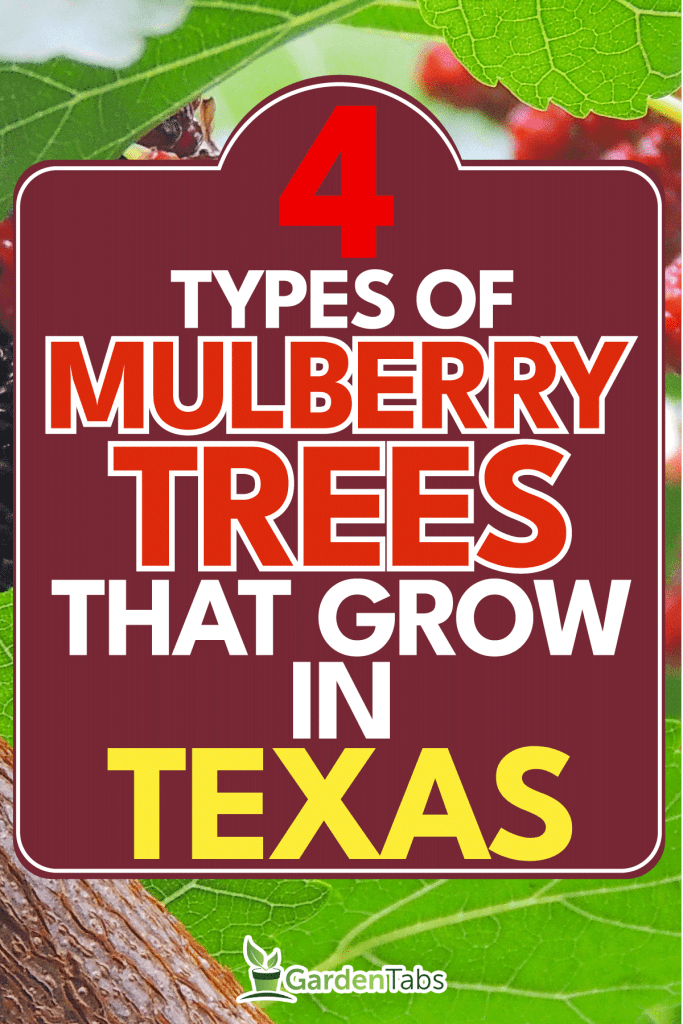
1. Texas Mulberry (Morus microphylla)
The Texas Mulberry is a small tree or large shrub that can grow anywhere from 16 to 25 feet tall and up to 20 feet wide. This tree is hardy for USDA Zones 5 through 9 and can be found naturally within canyons on dry hills and slopes, in arroyos, and along streams.
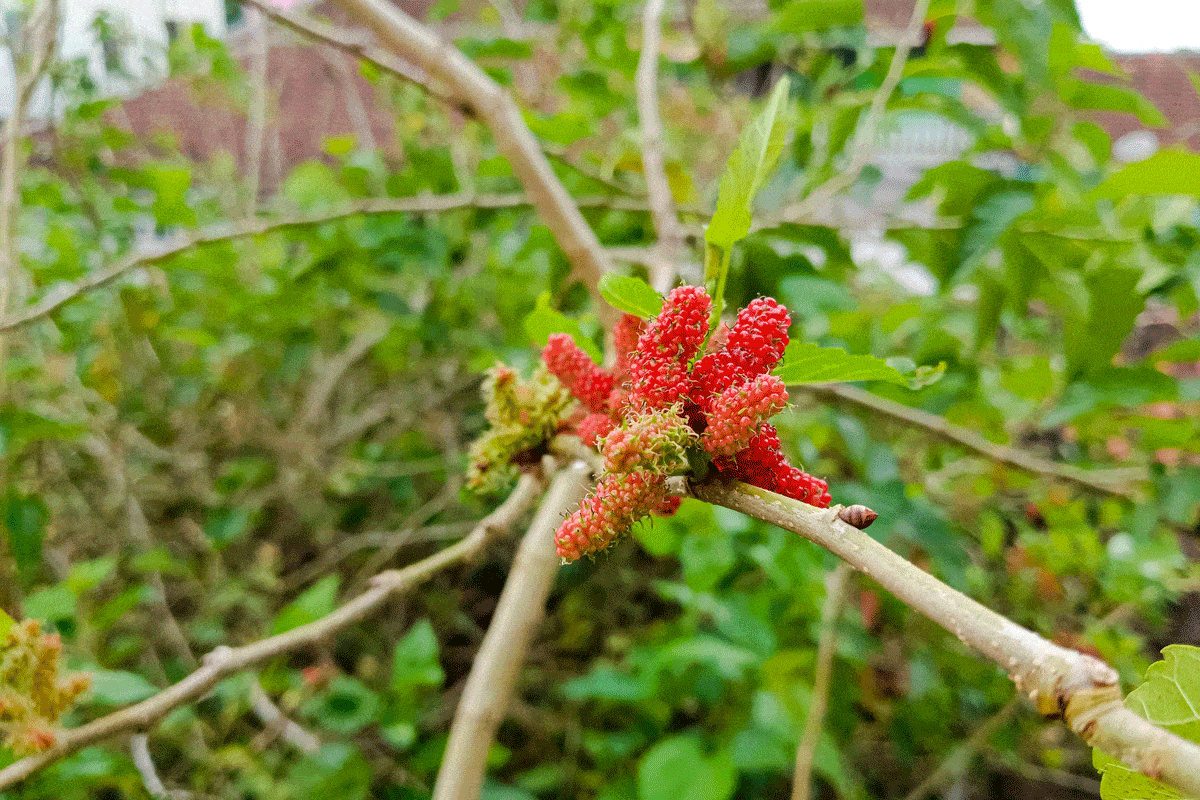
Texas Mulberry can be found at several elevations, with gardeners noting their growth between 3,500 and 5,000 feet and between 700 and 7,000 feet.
Identification
Gardeners can identify Texas Mulberry plants by their smooth, light-gray bark that will gain narrow scaly brownish ridges as the plant ages. The oval leaves are small—no more than three inches long—and grow on short stems that are less than an inch long.
The deciduous leaves are rough with pointed tips. Before they drop away for the season, the toothed leaves are dark green in color.
Texas Mulberries produce green flowers that grow in elongated clusters. They can be seen from March until April.
Gardeners should take note that male and female flowers are on different plants. So, they will need at least two trees if they want their tree to produce fruits. Male Texas Mulberry flowers are narrow and longer than female flowers.
Care
These trees are relatively simple to care for, as the Texas Mulberry prefers dry soil, grows well in various sandy and clay soil conditions, and doesn't require frequent watering. Texas Mulberries can be planted in partial shade but also thrive in full sun.
2. Common Mulberry (Morus rubra)
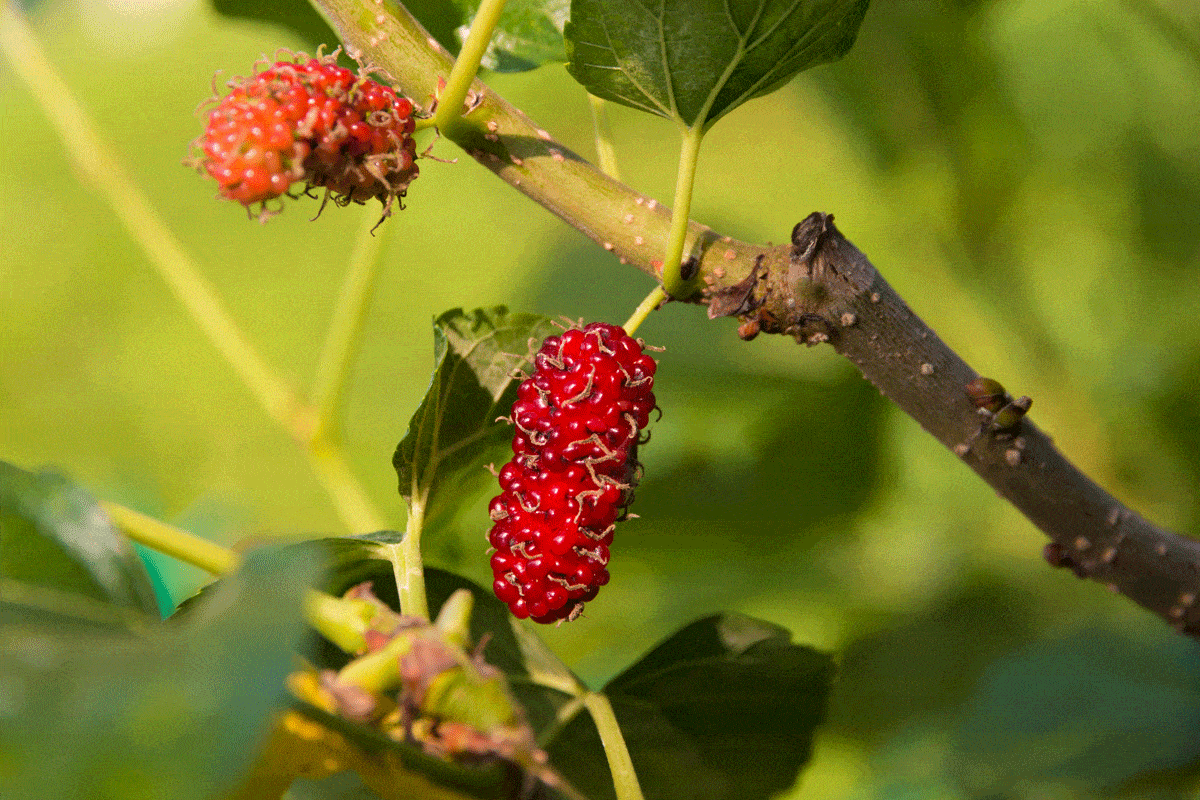
The common, or red, mulberry is a small- to medium-sized tree that can grow as high as 70 feet but is most commonly found between 35 and 50 feet tall. The trunk can grow as thick as 20 inches. Gardeners can find the common mulberry along streams and river banks, in shaded woods, and within ditches and ravines.
Within Texas, the common mulberry is typically found on the state's eastern side. Its natural distribution is much of the eastern United States and some of Canada. Despite being a common tree in the states, the common mulberry is an endangered species in Canada.
Identification
This tree can be identified by its dark grey and brown bark that forms scaly and peeling ridges with age. Common mulberries have toothed dark green leaves between three and five inches long and up to four inches wide, with the top side being very rough and hair while the bottom is smooth.
As the weather cools, the deciduous leaves turn a golden yellow before falling for the season. Common mulberries produce male or female flowers for each tree, so gardeners will need two to grow fruit. The flowers can be seen from April until May, are green or yellow, and grow in catkin clusters.
After blooming, the incredibly messy fruits will begin to appear and can be seen from May until June. Common mulberries are black, purple, or red. Despite being edible and showy, female plants are typically avoided because of the severe staining caused by the fruit.
Care
These trees can easily be grown from seed or cutting because of how quickly they grow. Ideally, the common mulberry should be planted in an area with full sun and moist, well-draining soil. If female trees are grown, the fruits will attract birds, foxes, opossums, squirrels, and raccoons, who greatly enjoy the fruit from the tree.
3. White Mulberry (Morus alba)
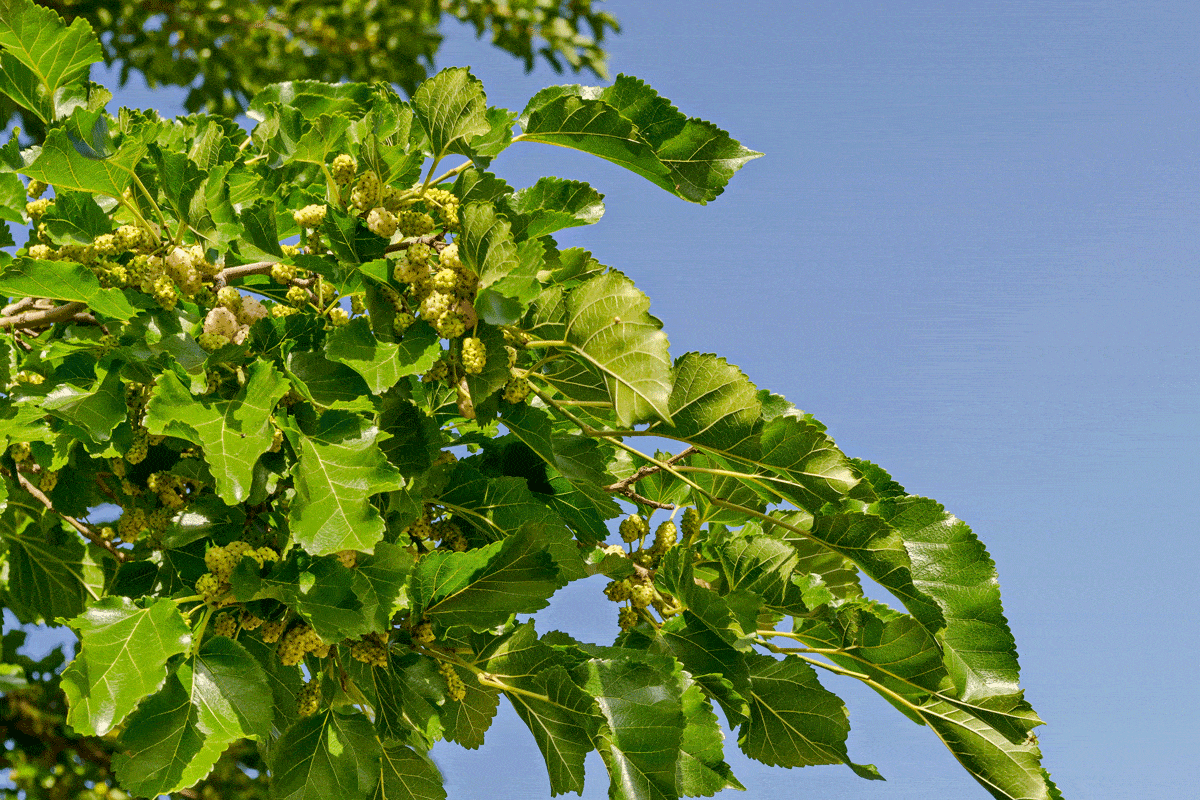
The white mulberry can be found in Texas. However, gardeners need to take caution when planting it, as it is highly invasive and can easily displace native plants, including the red mulberry (Morus rubra).
Its weed-like nature means that a tremendous amount of care needs to go into growing this plant. If the gardener is able to plant it, they will need to be incredibly careful, as removing or growing the white mulberry can accidentally cause the plant to spread and take over other areas.
This small- to medium-sized tree can grow up to 66 feet tall with a spread of up to 40 feet. Overall, the white mulberry has a short lifespan, with very few plants being capable of living up to 250 years.
Identification
White mulberries have green, glossy leaves that can grow up to six inches long and three inches wide. The lobed leaves are one of the main choices for feeding silkworms and other livestock. Before falling away for the season, the leaves will change to a rather unsightly yellow color.
The bark of this tree is dark brown to gray with shallow ridges. As the tree ages, the fissures become much deeper and tend to curve.
Flowers
If the female flowers have been fertilized, they will give way to edible fruits that resemble blackberries. As the fruits ripen, they will change colors to white, pink, and sometimes red or purple. Birds and squirrels love the delicious fruits, although some humans have reported having hallucinations after eating unripe berries.
4. Paper Mulberry (Broussonetia papyrifera)
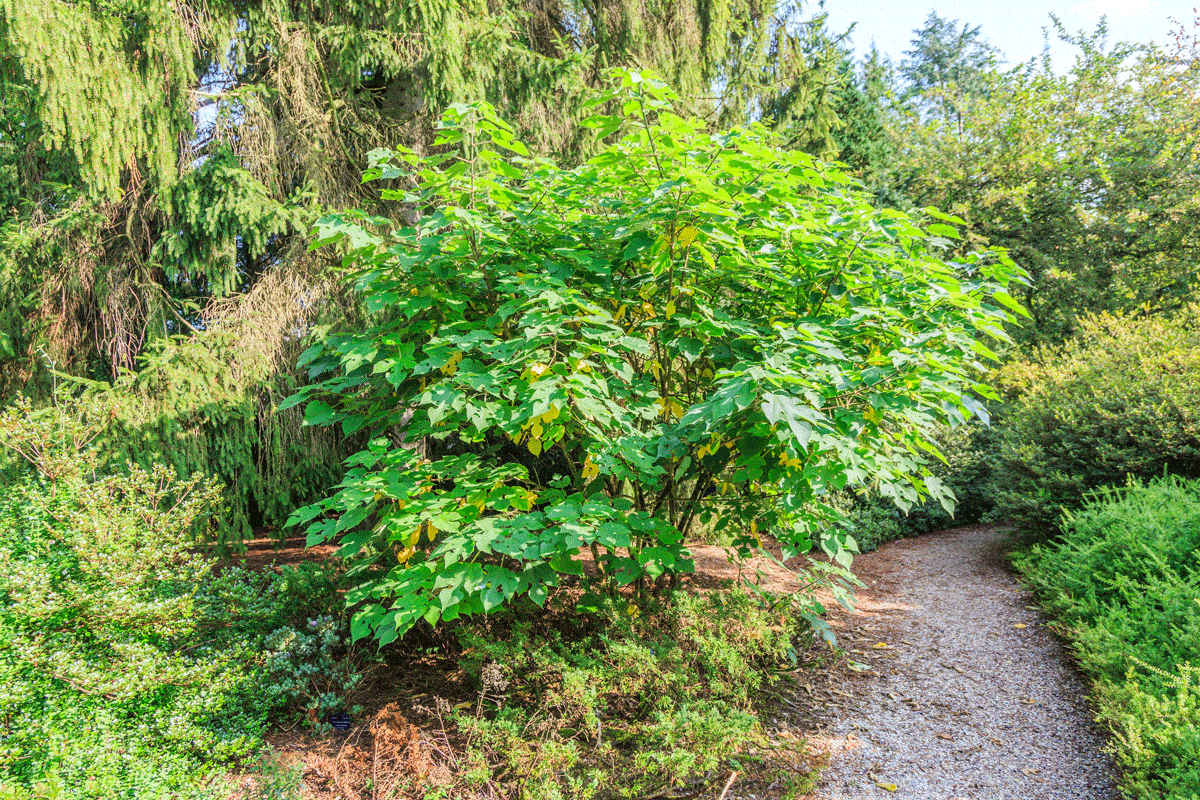
The paper mulberry is another tree introduced to Texas that invades areas where native plants could be. It can commonly be found overtaking areas in forests and along field edges.
This rapidly growing plant is a shrub or small tree that can grow to massive heights of 115 feet, although it is most commonly found to be between 33 and 66 feet tall and has a spread between 30 and 40 feet wide.
The paper mulberry prefers areas with fertile, well-draining soils and can tolerate light shade but prefers locations that get full sun. However, its invasive nature means that this tree can thrive in various soil conditions and is resistant to many challenges, including drought, heat, and urban pollution.
Identification
These trees can be identified by their gray bark that turns into a gray-brown color with deep furrows over time. The leaves are large (usually up to eight inches long) and dark green with a rough texture on top. As the weather cools, the deciduous leaves will turn yellow-green before dropping.
Flowers
The paper mulberry will produce male or female catkin flowers from April to May. The males can grow up to three inches long, while the female flowers are more rounded. If the female flowers were pollinated, the pale green flowers will give way to purple fruits.
Issues
As with other mulberry plants, paper mulberry is excellent for attracting birds. Unfortunately, this particular tree poses several problems for gardeners. One issue is that female paper mulberries are very aggressive growers. On the other hand, male mulberries can cause very severe allergies in people.
What Mulberry Trees Should Gardeners Plant In Texas?
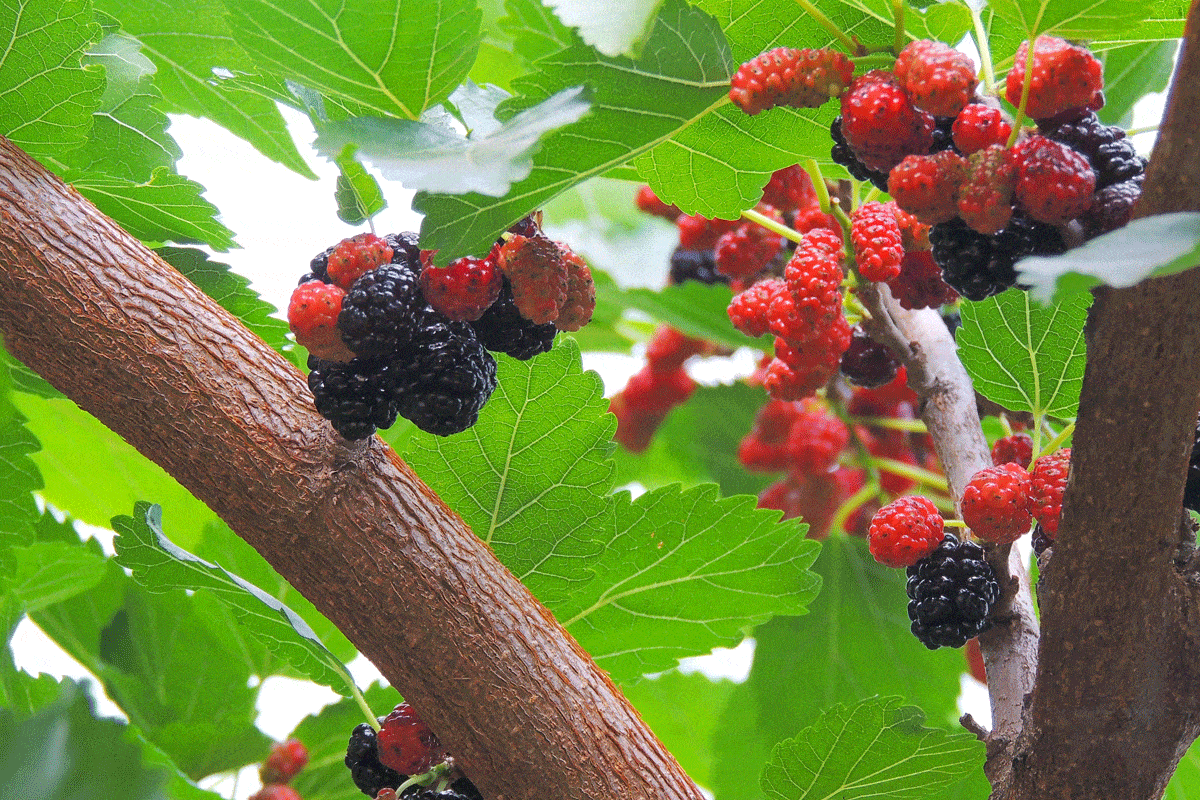
Out of the four mulberry trees in Texas, gardeners should stick with planting the Texas Mulberry or the Common or red mulberry. These are naturalized to the area and don't risk overtaking other natural plants.
Even when planting these mulberry trees, gardeners must be aware of the potential limitations in place. El Paso has banned the planting of mulberry trees since 1992. However, other cities may have placed bans on the tree, especially since male mulberry trees produce so much pollen and female trees are so messy.
Before planting, gardeners will need to ensure that the tree is allowed and that they are willing to deal with some of the negatives that come from having it.
Looking for more advice for gardening in The Lone Star State? Check out some of the posts below:
11 Best Plants For Clay Soil In Texas
When Is The Best Time To Plant An Avocado Tree In Texas?
Can Magnolia Trees Bloom Twice A Year? [Including In Florida, Texas, And California]
